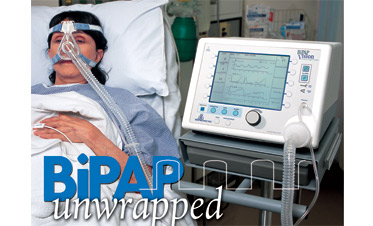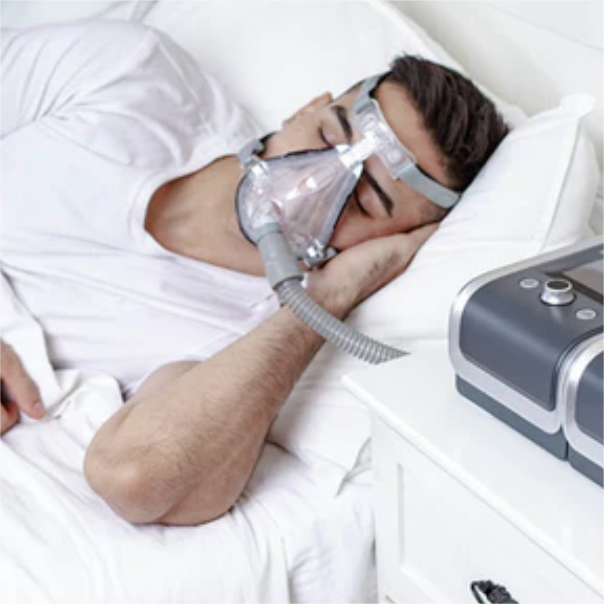Bipap vs. CPAP: Which Is the most effective for Your Sleep Condition?
When navigating the intricacies of rest conditions, the selection between BiPAP and CPAP therapy is an essential factor to consider. While CPAP supplies a steady air movement suitable for obstructive rest apnea, BiPAP's double stress setups may boost convenience for those with more elaborate respiratory concerns.
Comprehending Rest Disorders
Rest problems incorporate a series of conditions that disrupt normal rest patterns, impacting both the quality and period of rest. These conditions can manifest in different types, consisting of sleep problems, rest apnea, narcolepsy, agitated leg disorder, and parasomnias. Each problem provides distinct challenges, frequently bring about significant daytime tiredness, cognitive problems, and psychological disturbances.
Sleeplessness is identified by difficulty falling or remaining asleep, while rest apnea involves repeated disturbances in breathing throughout sleep, usually leading to fragmented remainder. Narcolepsy, on the various other hand, is noted by too much daytime sleepiness and sudden sleep assaults. Agitated leg disorder creates awkward sensations in the legs, prompting an unmanageable impulse to relocate them, which can additionally prevent the capacity to fall asleep.
The impact of sleep disorders prolongs past individual health and wellness, affecting overall efficiency, relationships, and high quality of life. Understanding the details nature of each condition is important for reliable medical diagnosis and treatment. As rest wellness becomes progressively identified as a crucial element of overall wellness, dealing with these conditions is important for improving both sleep quality and everyday functioning.
Exactly How CPAP Functions
Continual Positive Respiratory Tract Stress (CPAP) therapy is frequently used as a primary treatment for obstructive rest apnea (OSA) The mechanism of CPAP entails making use of a machine that supplies a constant stream of air via a mask put on during rest. This airflow maintains positive stress in the airway, stopping the collapse or obstruction of the throat that can take place throughout sleep.
When a person inhales, the CPAP device offers a continuous circulation of air, ensuring that the airway continues to be open - BiPAP Rental. This not only eases the signs of OSA, such as snoring and interrupted rest patterns, however likewise lowers the involved health and wellness risks, consisting of cardiovascular issues and daytime exhaustion
The pressure settings on a CPAP equipment can be customized to fulfill individual client demands, often identified via a rest research study. People normally go through titration research studies to locate the ideal pressure level for their unique condition. Routine follow-up and adjustments might be needed to make sure performance and comfort. Generally, CPAP therapy has actually been shown to substantially boost the top quality of sleep and overall wellness for people struggling with obstructive rest apnea.
Exactly How BiPAP Functions
BiPAP, or Bilevel Positive Air Passage Stress, is a specific type of non-invasive air flow that is particularly advantageous for clients with conditions such as intricate rest apnea or breathing problems. Unlike CPAP, which provides a continuous stream of air at a solitary stress, BiPAP gives two distinct stress setups: a higher inspiratory stress for breathing and a reduced expiratory pressure for exhalation. This dual-pressure approach enables simpler breathing, minimizing the effort called for throughout exhalation.
The gadget operates through a mask fitted over the nose or mouth, attached to a maker that generates air stress. When the patient breathes in, the machine delivers the higher pressure to aid with air movement, ensuring that the airway remains open. Upon exhalation, the maker automatically reduces the stress, making it more comfortable for the individual to breathe out.

Trick Differences In Between BiPAP and CPAP

In contrast, BiPAP (Bilevel Favorable Respiratory tract Pressure) supplies two different pressure settings: one for breathing and a reduced one for exhalation. This double pressure system permits even more comfortable breathing, especially click this for clients who battle with exhaling versus a continuous stress. BiPAP is commonly advised for patients with complicated rest apnea, chronic obstructive lung condition (COPD), or those that need added assistance throughout rest.
Moreover, the complexity of BiPAP gadgets generally results in a higher expense and needs more mindful titration than CPAP. BiPAP Rental. Recognizing these crucial distinctions can help in recognizing which device might be preferable for certain sleep disorders, establishing the groundwork for informed treatment decisions
Choosing the Right Therapy
The choice in between BiPAP and CPAP treatment primarily hinges on the particular features of the sleep problem, the individual's general health and wellness, and their comfort with the tool. CPAP, which delivers a continual stream of air, is generally recommended for obstructive sleep apnea (OSA)
Conversely, BiPAP supplies two levels of stress: one for inhalation and a reduced one for exhalation. This dual stress system is useful for clients with complex rest apnea or those that experience problem exhaling versus a continual pressure. Furthermore, BiPAP is often suggested for people with breathing problems, such as persistent obstructive pulmonary disease (COPD), where differing pressure setups can enhance convenience and conformity.
Inevitably, a detailed assessment by a sleep professional, including a sleep research study, can help figure out which treatment lines up ideal with the client's demands. Elements such as comfort, convenience of usage, and certain medical conditions should additionally be taken into account to enhance therapy end results.
Verdict
In summary, both BiPAP and CPAP offer unique objectives in the administration of sleep problems. CPAP is effective for obstructive sleep apnea through consistent air movement, while BiPAP offers dual stress settings that enhance convenience for those with complicated sleep apnea or respiratory system problems. The selection between these treatments should be assisted by individual requirements and conditions, necessitating a detailed examination by a sleep expert to ensure ideal therapy end results and boosted top quality of rest.

In general, CPAP treatment has been revealed to considerably improve the quality of sleep and total health and wellness for individuals experiencing from obstructive sleep apnea.
BiPAP is often recommended for people with complex rest apnea, persistent obstructive lung disease (COPD), or those that call for added support throughout sleep.
CPAP is efficient for obstructive sleep apnea via consistent air movement, while BiPAP uses twin pressure setups that improve convenience for those with intricate sleep apnea or respiratory problems.